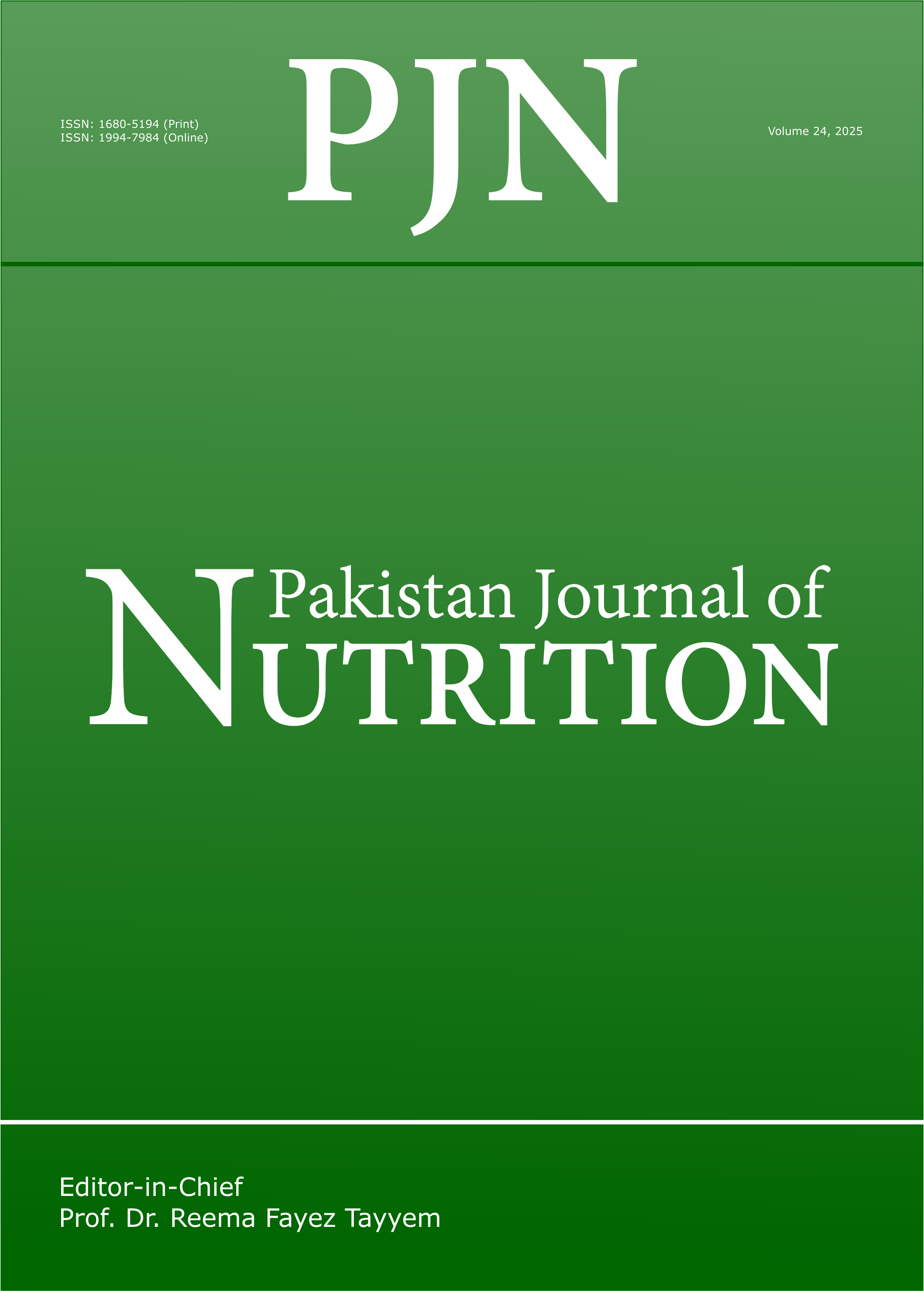Comparison of Phenolic Compounds of Some Edible Plants of Iran and India
DOI:
https://doi.org/10.3923/pjn.2008.582.585Keywords:
Antioxidant, methanol and solanum indicum linn, phenolicAbstract
Phenolic compounds, ubiquitous in plants are an essential part of the human diet and are of considerable interest due to their antioxidant properties. The antioxidant activity of phenolic compounds depends on the structure, in particular the number and positions of the hydroxyl groups and the nature of substitutions on the aromatic rings. Alocacia indica sch., Asparagus officinalis DC., Chlorophytum comosum Linn., Cordia Myxa Roxb., Eulophia Ochreata Lindl., Momordica dioicia Roxb., Portulaca oleracia Linn. and Solanum indicum Linn. are the major sources of phenolic compounds in the human diet. Soluble phenolic acids were extracted with methanol. The aim of this study determination of the distribution and total phenolic compound in a wide range of vegetables consumed in India and Iran.
Downloads
Published
Issue
Section
License
Copyright (c) 2008 Asian Network for Scientific Information

This work is licensed under a Creative Commons Attribution 4.0 International License.
This is an open access article distributed under the terms of the Creative Commons Attribution License, which permits unrestricted use, distribution and reproduction in any medium, provided the original author and source are credited.

